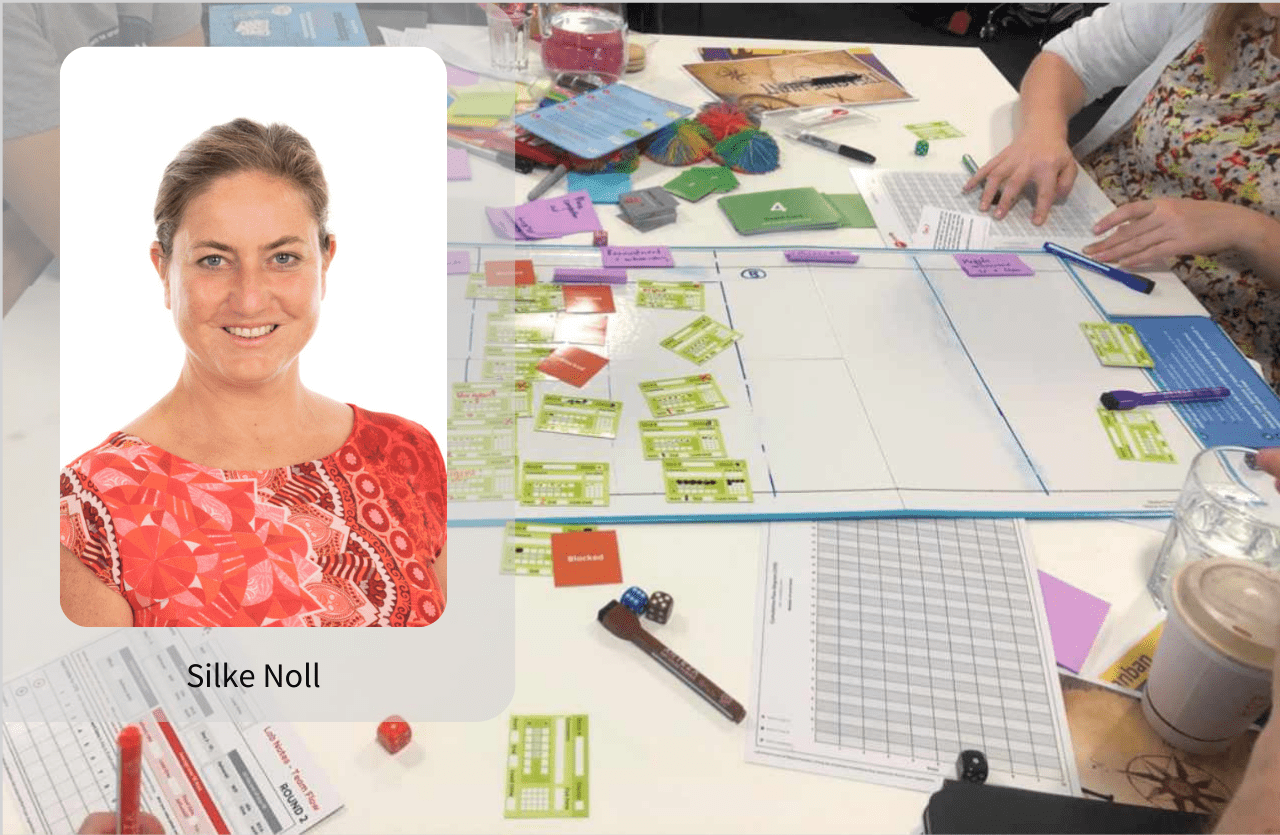
Virtual Okaloa Flowlab simulation – Workflow

When you look at how work flows through an organization, what you see is often the time when people in teams are actively working on it. Mostly neglected are the wait states. They naturally appear in all organizations around the world when more than one team is working on the same work, or if external dependencies like vendors or agencies are involved. How can you identify them, and how can teams learn to reduce the wait time to deliver quicker and more reliably to their customers, co-operate better and hence improve their team and organizational culture?
Topic: Workflow
In most organizations work is handed over from one specialist role to another, following a certain sequence, also known as a workflow. Workflow cannot be ignored as it is an important part of how work is organized in most organizations, even including agile organizations. Participants will experience workflow (loopbacks) and dependencies. With this simulation we are simulating a typical workflow as defined in e.g. Jira or any other tracking system, whereby work goes from one person to another, and back in case of loopbacks. The Workflow simulation shows what Kanban really is about – differentiating between proto-kanban and Kanban as well as teaching how to deal with back-flow.
Learning objectives and benefits
- During and after the simulation definite wow-moments across teams on more collaborative ways of working
- After the simulation better communication and collaboration across teams
- Faster and more reliable delivery of requests to the customer
- Better quality across work, also long-term
- Cost savings because of shorter lead times (time from starting to finishing work) and higher throughput across teams
- Individuals will be able to see the bigger picture of the work, work for a purpose, take personal pride across the organisation and improve the organisational culture
Course format
4 hours simulation, including group discussion, real life simulation and debrief (virtual version; in person if Silke Noll is in Germany).
Note on times
- The course will be run out of New Zealand.
- 4-5 hours, 8-12am CEST, 6-10pm NZST.
Number of participants: 3 to max. 10
You can book the training as an in-house measure or as a virtual training. If more than two people are interested, we can also schedule an open training according to your wishes. Ask about the possibilities under the registration below.
Training languages: English, German, French and Italian.
We are looking forward to your request!
You can use this registration button to send us your contact details and we will get in touch with you immediately about the requested training!


